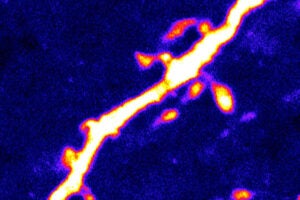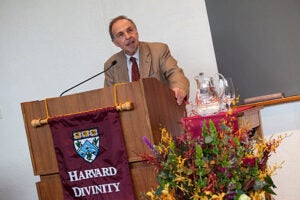Tag: National Institutes of Health
-
Nation & World
Stem cells need recovery time, too
A new study describes the mechanism behind impaired muscle repair during aging and a strategy that may help rejuvenate aging tissue by manipulating the environment in which muscle stem cells reside.
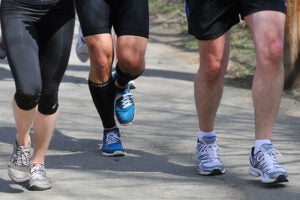
-
Nation & World
Pain relievers increase hearing loss risk
According to a study by researchers at Harvard-affiliated Brigham and Women’s Hospital, women who took ibuprofen or acetaminophen two or more days per week had an increased risk of hearing loss.
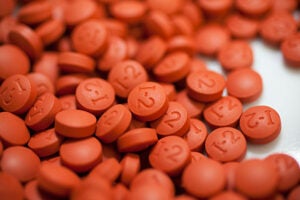
-
Nation & World
Merging the biological, electronic
For the first time, Harvard scientists have created a type of cyborg tissue by embedding a 3-D network of functional, biocompatible, nanoscale wires into engineered human tissues.
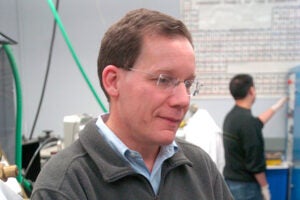
-
Nation & World
Artificial jellyfish swims in a heartbeat
A team of researchers at Harvard University and the California Institute of Technology has turned inanimate silicon and living cardiac muscle cells into a freely swimming “jellyfish.”
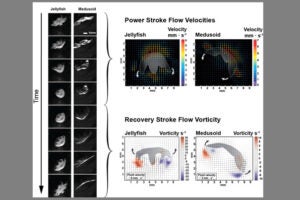
-
Nation & World
Personalized medicine closer to reality
A consortium of scientists at 20 institutions, led by a principal faculty member at the Harvard Stem Cell Institute, has used stem cells to take a major step toward developing personalized medicine to treat Parkinson’s disease.
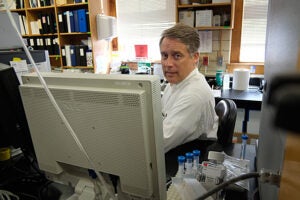
-
Nation & World
Thinking about health as an investor might
A “proof-of-concept” study that applies financial portfolio theory to federal life science research funding shows that potentially significant gains are available by altering the allocation of funding by the National Institutes of Health.
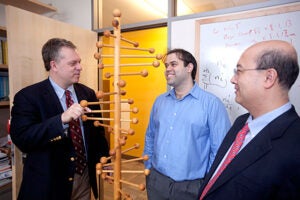
-
Nation & World
When good cholesterol goes bad
A new study by Harvard School of Public Health (HSPH) researchers has found that a subclass of high-density lipoprotein (HDL) cholesterol, the so-called good cholesterol, may not protect against coronary heart disease (CHD) and in fact may be harmful.

-
Nation & World
Chill therapy
MGH’s Herbert Benson, author of “The Relaxation Response,” says that the methods outlined in his book can create genetic changes in irritable bowel syndrome sufferers, and with further study might be used to treat other ailments.
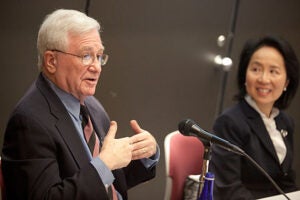
-
Nation & World
Bridging the gap
Two Harvard pediatric cancer researchers at Dana-Farber Cancer Institute (DFCI) and a scientist at Columbia University Medical Center have each received $100,000 Bridge Grants from a private foundation seeking to help make up for declining federal biomedical research funding.
-
Nation & World
Reaping benefits of exercise minus the sweat
A team led by researchers at Harvard-affiliated Dana-Farber Cancer Institute has isolated a natural hormone from muscle cells that triggers some of the key health benefits of exercise.
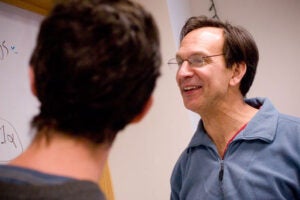
-
Nation & World
Slowing neurodegeneration in Huntington’s
Harvard researchers have found a treatment that increases brain levels of an important regulatory enzyme may slow the loss of brain cells that characterizes Huntington’s disease and other neurodegenerative disorders.
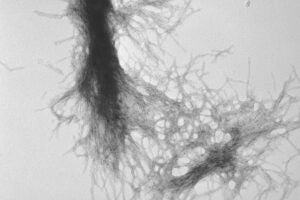
-
Nation & World
Traumatic injury sets off a ‘genomic storm’
Harvard researchers are among a nationwide team that has found serious traumatic injuries, including major burns, set off a “genomic storm” in human immune cells, altering around 80 percent of the cells’ normal gene expression patterns.
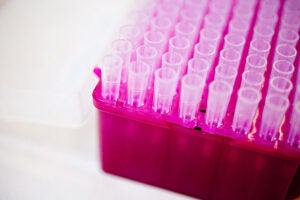
-
Nation & World
Guiding lights
In a scientific first that could shed light on how signals travel in the brain and how learning alters neural pathways, scientists at Harvard have created genetically altered neurons that light up as they fire. The work may also lead to speedier drug development.
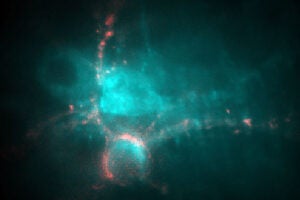
-
Nation & World
Alleviating radiation sickness
A combination of two drugs may alleviate radiation sickness in people who have been exposed to high levels of radiation, even when the therapy is given a day after the exposure occurred, according to a study led by scientists from Harvard-affiliated Dana-Farber Cancer Institute (DFCI) and Children’s Hospital Boston.
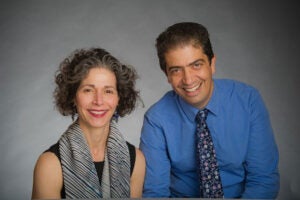
-
Nation & World
Following the clues
Researchers at Harvard Medical School and Children’s Hospital Boston have retraced the evolution of an unusual bacterial infection as it spread among cystic fibrosis patients by sequencing scores of samples collected during the outbreak, since contained.
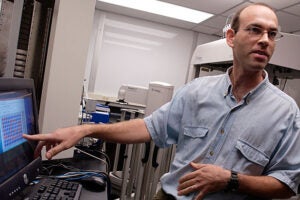
-
Nation & World
Understanding interference
In a discovery that might eventually lead to new biomedical treatments for disease, researchers from Harvard’s Department of Molecular and Cellular Biology have identified two types of RNA that are able to move between cells as part of a process called RNA-interference (RNAi).
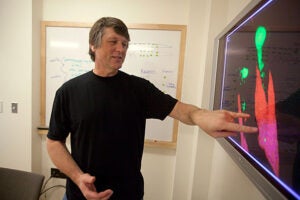
-
Nation & World
New way to explore how life, disease work
Researchers have built a map that shows how thousands of proteins in a fruit fly cell communicate with each other. This is the largest and most detailed protein interaction map of a multicellular organism, demonstrating how approximately one-third of the proteins cooperate to keep life going.
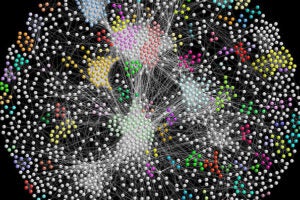
-
Nation & World
Early excellence, rewarded
Two young Harvard scientists will each receive $2.54 million or more in National Institutes of Health grants that will support research and overhead costs through a new program intended to accelerate the entry of outstanding junior investigators into independent researcher positions.
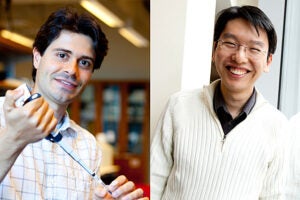
-
Nation & World
Biomarker for Huntington’s identified
In a new research paper published in the Proceedings of the National Academy of Sciences Early Edition online, Harvard-affiliated researchers identify a transcriptional biomarker that may assist in the monitoring of Huntington’s disease activity and in the evaluation of new medications.

-
Nation & World
Funding innovation
Nine researchers from across Harvard have received more than $15 million in special National Institutes of Health (NIH) grants designed to foster innovative research with the potential to propel fields forward and speed the translation of research into improved public health.
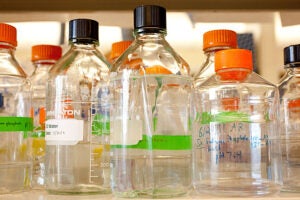
-
Nation & World
Animal scents
A Harvard study of how mice respond to scent cues from potential mates, competitors, and nearby predators has laid a foundation for further investigations that may eventually lead to a greater understanding of social recognition in the animal brain, with implications for a host of human disorders ranging from autism to post-traumatic stress disorder.
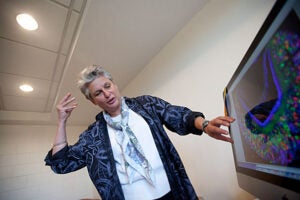
-
Nation & World
Disrupting a cancer gene
Scientists at Harvard-affiliated Dana-Farber Cancer Institute have successfully disrupted the function of a cancer gene involved in the formation of most human tumors by tampering with the gene’s “on” switch and growth signals, rather than targeting the gene itself.
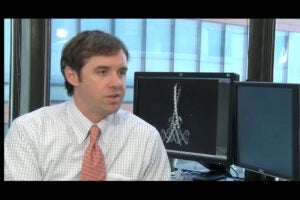
-
Nation & World
Advances in type 2 diabetes drugs
Researchers from Harvard-affiliated Dana-Farber Cancer Institute and the Scripps Research Institute in Jupiter, Fla., report they have created prototype drugs having powerful anti-diabetic effects, yet apparently free — at least in mice — of dangerous side effects plaguing some current diabetes medications.
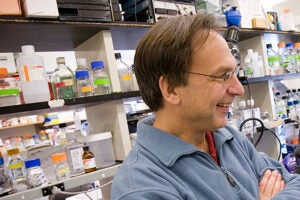
-
Nation & World
Tax on sugary drinks?
The global obesity epidemic has been escalating for decades, yet long-term prevention efforts have barely begun and are inadequate, according to a new paper from international public health experts published in the Aug. 25 issue of the journal The Lancet.

-
Nation & World
Detecting heart-valve infection
A novel imaging probe developed by a Harvard-led team of investigators at Massachusetts General Hospital may make it possible to diagnose accurately a dangerous infection of the heart valves.
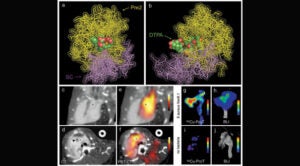
-
Nation & World
What’s behind the predictably loopy gut
Between conception and birth, the human gut grows more than two meters long, looping and coiling within the tiny abdomen. Within a given species, the developing vertebrate gut always loops into the same formation — however, until now, it has not been clear why.
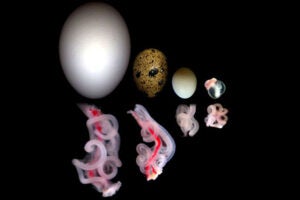
-
Nation & World
Sleep, oxygen, and dementia
Harvard research finds that sleep-disordered breathing is associated with a higher risk of cognitive impairment in older women.





